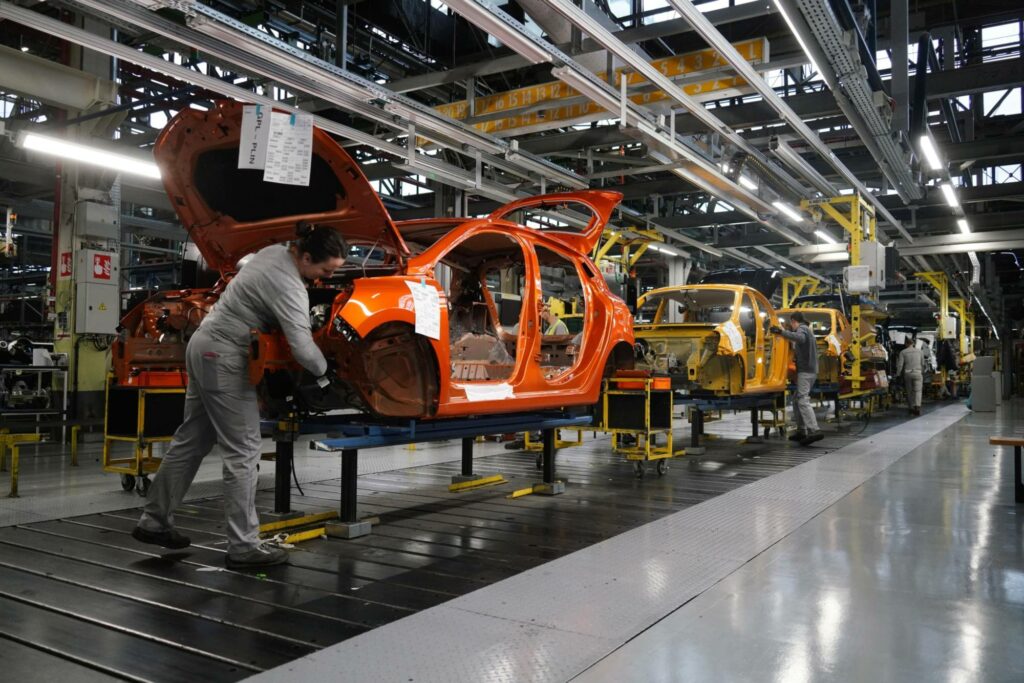In today’s world, where the quest for efficiency and innovation drives the automotive industry, the art and science of car design have taken center stage. When we admire a sleek, efficient car on a car auction website, it’s easy to forget that its design is not just a matter of aesthetics—it’s a triumph of engineering. Car design is a complex and fascinating science that blends artistry with functionality. In this article, we’ll dive into the science behind car design and how engineers work tirelessly to create vehicles that are not only visually appealing but also highly efficient.
The Balance of Form and Function
Aerodynamics
Aerodynamics is at the heart of car design. Engineers strive to reduce drag and improve airflow around the vehicle to enhance fuel efficiency and performance. Every curve, contour, and angle on a car’s body is carefully crafted to minimize air resistance.
Wind tunnel testing is a critical part of the design process. Engineers subject car prototypes to wind tunnel experiments to analyze how air flows over and around the vehicle. They can refine the design to reduce drag and improve fuel economy by making adjustments based on these tests.
Weight Distribution
Efficient cars are designed with optimal weight distribution in mind. Engineers carefully consider placing heavy components like the engine, transmission, and fuel tank to ensure a balanced weight distribution between the front and rear axles. This balance improves handling, stability, and overall performance.
Fuel Efficiency
Engine Efficiency
The heart of any car is its engine, and engineers constantly work to make engines more efficient. This involves maximizing combustion efficiency, reducing friction, and optimizing the engine’s power output. Turbocharging, direct injection, and variable valve timing are just some of the technologies that enhance engine efficiency.
Lightweight Materials
Reducing a car’s weight is a key strategy for improving fuel efficiency. Engineers are turning to lightweight materials like aluminum, carbon fiber, and high-strength steel to replace heavier components. These materials not only reduce weight but also enhance structural integrity and safety.
Safety and Crashworthiness
Car design isn’t just about making cars go faster and consume less fuel—it’s also about keeping occupants safe. Engineers employ advanced crashworthiness techniques to ensure that cars can withstand collisions and protect passengers.
Crumple Zones
Modern cars are designed with crumple zones that deform and absorb energy in the event of a collision. These zones reduce the risk of injury by directing crash forces away from the passenger compartment.
Advanced Materials
High-strength materials, like boron steel and aluminum, are strategically placed in car structures to enhance crashworthiness. These materials provide strength where it’s needed most while reducing weight elsewhere.
Environmental Considerations
Emissions Reduction
With growing environmental concerns, car design has shifted toward reducing emissions. Engineers work on developing cleaner engines, including hybrid and electric powertrains, to minimize the environmental impact of driving.
Sustainable Materials
Beyond the engine, car interiors are now being designed with sustainability in mind. Recycled and eco-friendly materials are used to create interior components, reducing the carbon footprint of manufacturing.
Future Innovations
Car design is an ever-evolving field, and the future holds exciting possibilities.
Autonomous Vehicles
The development of autonomous vehicles is revolutionizing car design. Engineers are reimagining the interior layout of cars, creating spaces for passengers to work, relax, or even sleep while the car handles the driving.
Connectivity
Cars are becoming more connected, with engineers integrating advanced infotainment systems, navigation, and communication technologies. These systems are designed to enhance the driving experience and keep passengers entertained and informed.
Electric Revolution
The shift towards electric vehicles (EVs) is changing the landscape of car design. EVs require innovative solutions for battery placement, cooling, and recharging infrastructure. Engineers are working to extend the range of electric vehicles while making them more accessible and convenient for consumers.
Sustainable Manufacturing
Car manufacturers are increasingly adopting sustainable manufacturing practices. This includes using renewable energy sources for production, reducing waste, and implementing efficient assembly processes. The goal is to minimize the environmental impact of the entire lifecycle of a vehicle.
3D Printing
In the future, 3D printing is likely to play a significant role in car design. This technology allows for the rapid prototyping of parts and components, reducing development time and costs. Engineers can create complex, lightweight structures previously impossible to manufacture using traditional methods.
Conclusion
Car design is a remarkable blend of art and science. Engineers employ aerodynamics, weight distribution, engine efficiency, and safety measures to create efficient and safe vehicles. With a growing focus on sustainability and the advent of autonomous driving, the future of car design promises even more exciting innovations. So, the next time you admire a beautifully designed car, remember that beneath its stylish exterior lies a world of scientific ingenuity and engineering excellence.
